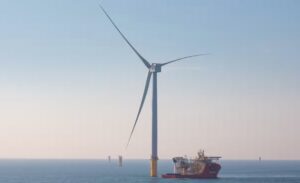Australia is hurtling towards a major new milestone of 25 gigawatts (GW) total installed rooftop solar capacity, and adding behind-the-meter batteries to the mix at a record rate, as households and businesses continue their march to cheaper bills and energy independence.
The Clean Energy Council’s bi-annual Rooftop Solar and Storage Report for the first half of 2024, published on Wednesday, puts the cumulative total of panels installed on rooftops around the country at 24.4 GW, well on track to passing the 25 GW mark by the end of the year.
This is now clearly more than the remaining total combined power generating capacity of black and brown coal-fired power stations in the country, which stood at 21.3 GW in the financial year to 2023-24.
And as coal power makes its way out of the mix, solar continues to grow, with a total installed capacity of 1.3 GW added so far this year – or 141,364 systems – taking the share of rooftop PV in the national electricity mix to 11.3 per cent, as of the end of June.

Source: Clean Energy Council, Rooftop solar and storage report January—June 2024
“Over 3.7 million homes and small businesses now have solar panels on their roofs,” says Clean Energy Council co-chief policy and impact officer, Con Hristodoulidis.
“It’s become a staple investment for homeowners and small businesses.
“With typical payback periods of around three to four years, rooftop solar is now a recognised and simple step to take pressure off the family budget.”
But more and more consumers are now also looking beyond generating electrons on their rooftops to storing them in home batteries for use when the sun – or the grid – goes down.
“Home batteries are now the missing piece of the puzzle, to maximise those solar savings for times when the sun isn’t shining and smash household energy bills,” Hristadoulidis says.

Source: Clean Energy Council, Rooftop solar and storage report January—June 2024
According to the CEC report, put together using data provided by solar consultancy SunWiz, nearly 30,000 battery sales were recorded in the first half of 2024, taking the cumulative total past 140,000 and pushing the rolling 12-month quarterly average of battery sales to a record of 14,555.

Source: Clean Energy Council, Rooftop solar and storage report January—June 2024
The data shows 20.7 per cent of rooftop solar installations had an accompanying small-scale battery in the first half of 2024, while the attachment rate of batteries connected to solar households reached a high of 19% – a 5% increase on the same time a year ago.
But the CEC says that despite this progress, home battery uptake remains far behind the levels needed under the Australian Energy Market Operator’s 2024 Integrated System Plan to meet Australia’s 82 per cent renewable energy target in 2030.
And it wants to see a national incentive scheme introduced to give consumers a hand with the upfront cost of investment and to give uptake levels the boost they need.
The CEC has been pushing hard for home storage incentives, including through the “It’s Time to Back Batteries” campaign, which claims a national scheme could trigger an additional 410,000 installations of batteries in homes and small businesses by 2050.
CEC modelling showed households could achieve annual bill savings of between $900 and $1000 a year with non-orchestrated batteries and between $1150 and 1500 per year with orchestrated batteries trading energy with the grid.
More batteries are also expected to deliver benefits to those who cannot access home solar and storage, as they drive down energy costs and deliver other benefits to the grid.
“It is a win-win outcome,” says Hristadoulidis. “In the midst of a slower economy, solar PV and home batteries can play a key role is lifting economic activity by support for thousands of Australian installers and businesses working in the sector, as well as lowering energy bills for all Australians.”
Other highlights from the CEC report come from the state-by-state rooftop PV tally, which sees New South Wales maintain its long-time domination of the rankings, with another 454 MW of new rooftop PV installed in the first half of 2024.

Source: Clean Energy Council, Rooftop solar and storage report January—June 2024
This makes NSW the second state to pass one million total rooftop PV installations – Queensland did this last year – and takes its cumulative installed capacity to an impressive 6.6GW; the highest of any state and more than a quarter of the national capacity.
In second and third place are Queensland, with 360MW added in the first half of 2024, and Victoria, where 246MW was added.
Rooftop solar system sizes, meanwhile, keep getting bigger, as households start to electrify everything – including their trannsport.
The data shows the growth in the average system size in the first half of 2024 grew slightly to 9.7 kW, a new bi-annual record and a far cry from 10 years ago, when the average system size was 4.3 kW.








